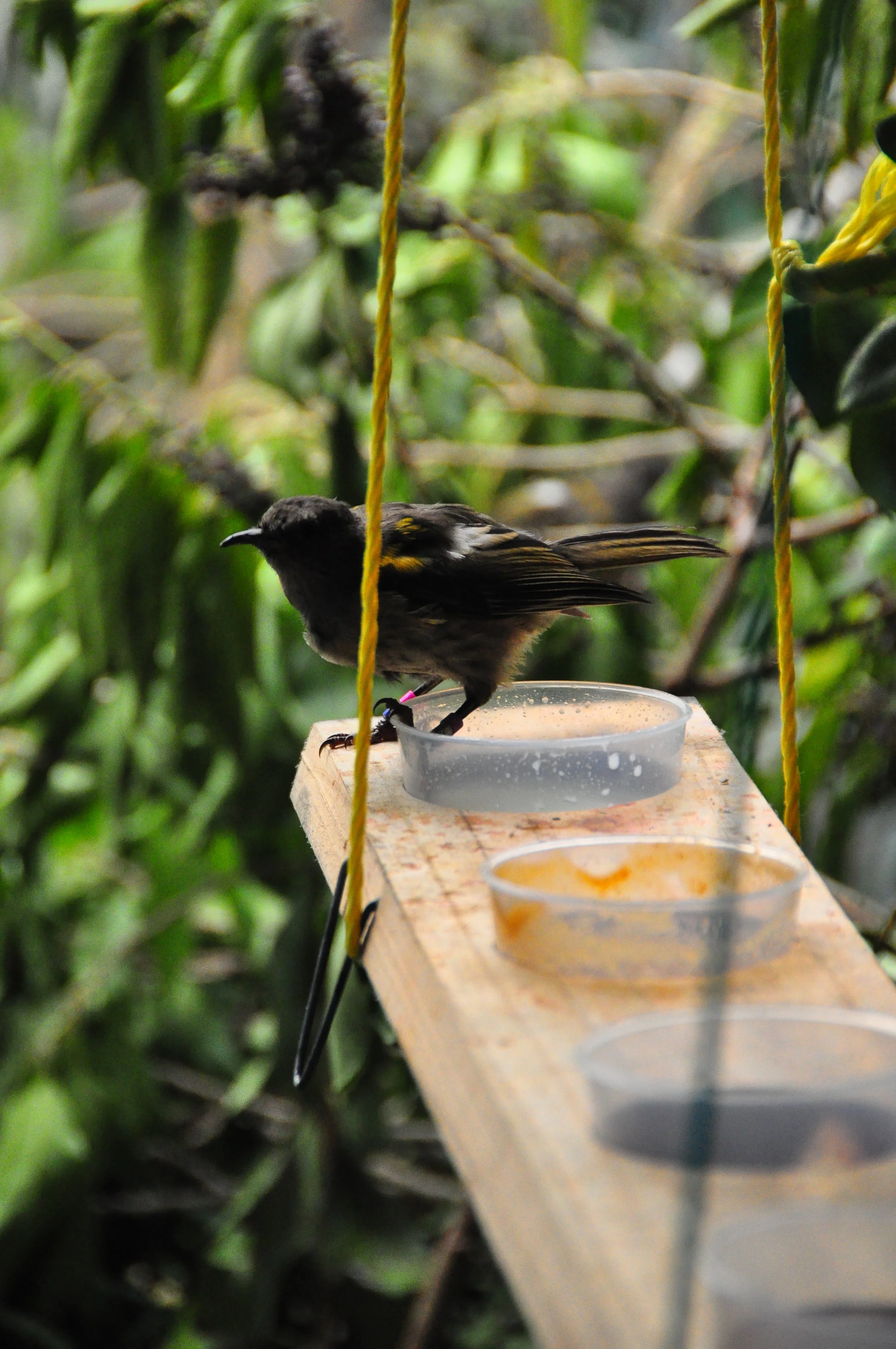In 2005, we reached a milestone with hihi on Tiritiri Matangi Island with the first translocation of birds to seed a new population (Zealandia, in Wellington). Thirteen years (and many translocations) later, Vix and Caitlin are now experiencing their first hihi translocation.
The translocation in 2005 was also an experiment: the hihi recovery group tried something new - most of the birds moved were juveniles. Tiri was producing lots of young each year, but it was suspected that there were not many opportunities for them to recruit to the breeding population.
Since the first Tiri translocation, we've been looking more closely at juvenile behaviour. First, Kate Richardson's research with hihi moved to Maungatautari suggested that dispersal and choice of breeding location might be influenced by broad-scale familiarity among birds. Now, Vix's PhD research is showing us that juvenile hihi spend lots of time together, and some individuals have stronger social bonds than others. How will translocation alter these bonds? Will moving "friends" together make it easier for them to adapt to their new location after translocation? How will they respond to the changes in resources? And, what happens to the birds left behind on Tiritiri? This translocation to Rotokare - the first to investigate the role of social behaviour in this context - should give us some answers. But, given what we know about hihi already, it's sure to also throw up lots of surprises! Stay tuned...
How to prep an aviary for #hihitranslocation. Should start catching birds in morning! @docgovtnz @ZSLScience @DOCTSAmbassador pic.twitter.com/fWq4Uyssvo
— Dr John Ewen (@hihinews) 26 March 2017
Happy hihi settling and tucking in to their "cafeterias" on the #hihitranslocation. They're spoiled for choice! @hihinews @informedbirds pic.twitter.com/IYcKG1ncj9
— Vix Franks (@VixFranks) 28 March 2017
